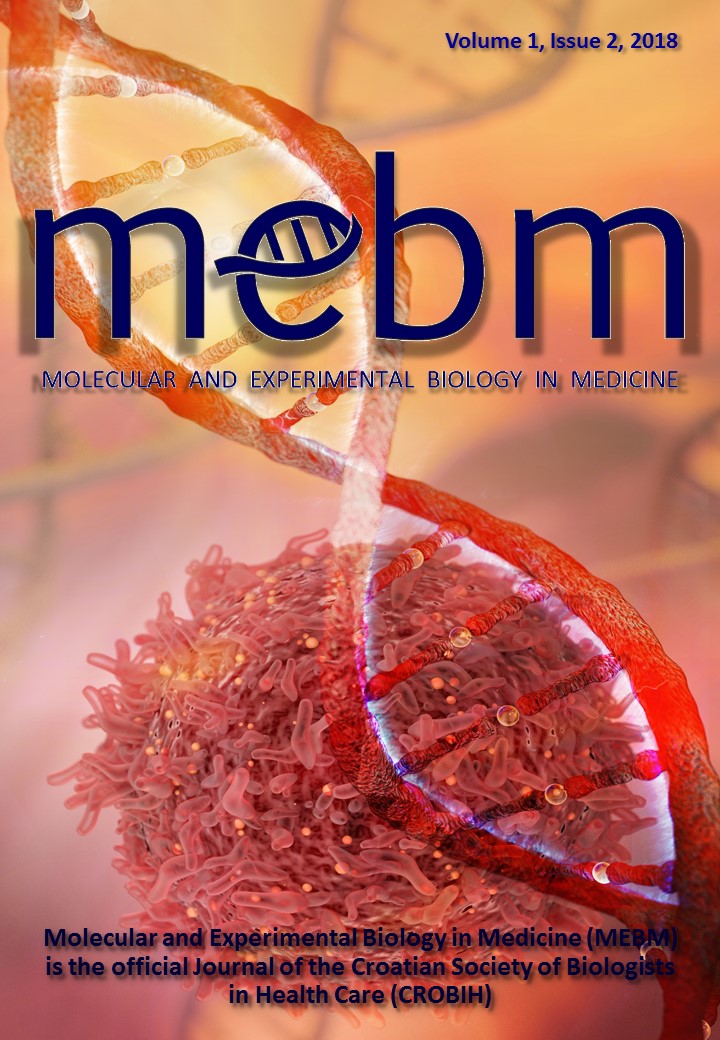GENETIC VARIATIONS OF D15S541 AND D15S11 LOCI IN THE CROATIAN POPULATION AND THEIR APPLICATION IN THE DETECTION OF UNIPARENTAL DISOMY 15
Abstract
Aim: Prader Willi (PWS) and Angelman (AS) syndromes are two clinically distinct genetic disorders, both mapping to chromosome region 15q11-q13. PWS and AS can be caused by a de novo derived deletion of this region, uniparental disomy (UPD) of chromosome 15, or silencing of alleles.
Methods: Polymorphism of two STR loci (D15S11 and D15S541) was studied in a sample of 178 healthy unrelated Croatian individuals. The group of 28 patients with the clinical presentation of PWS or AS was also tested for these two loci, as well as for additional two loci (D15S642 and D15S659) for the detection of UPD15. Alleles at the tested loci were determined by the PCR-STR method.
Results: Among healthy individuals, 13 and 17 different alleles were identified at the D15S11 and D15S541 locus, respectively. The most frequent alleles at D15S11 were the D15S11-2 allele (50.0%), followed by the D15S11-5 allele (12.6%) and the D15S11-6 allele (10.4%). Among D15S541 alleles, the most frequent was D15S541-5 (36.5%), followed by D15S541-9 (34.8%). The observed heterozygosity for tested STRs was 0.624 for D15S11 and 0.719 for D15S541, while PIC values were as follows: 0.712 (D15S11) and 0.727 (D15S541). No significant deviations from Hardy–Weinberg equilibrium could be observed for these systems.
In the patients' group, the parental origin of chromosome 15 was determined in 26 out of 28 patients, while for two patients only one STR locus was informative, and therefore not sufficient for the diagnosis of UPD.
Conclusion: The combination of four STR loci at chromosome 15 is in most cases sufficient for the detection of UPD15.




